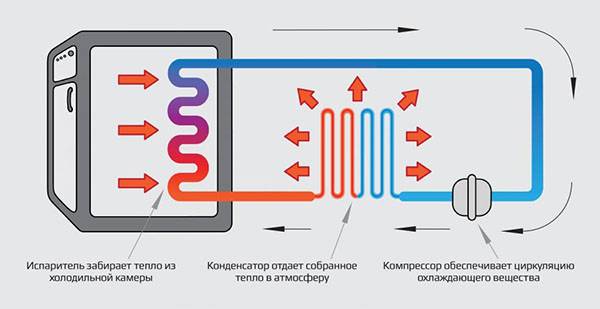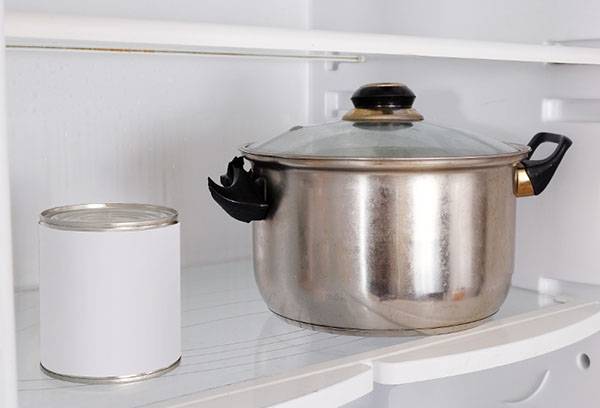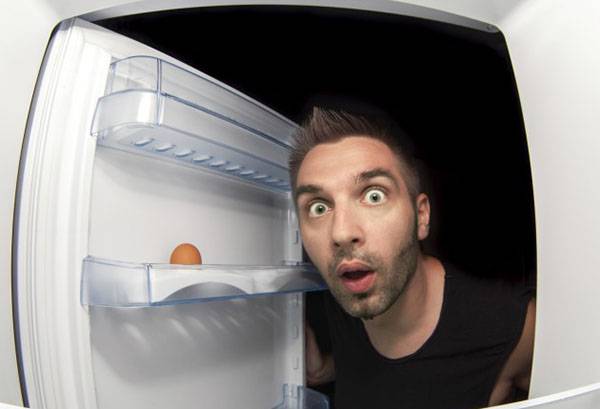Is there a place for hot in the refrigerator and why is it still not worth the risk?
And you, too, out of habit, vaccinated since childhood, never put the chicken that you just pulled out of the stove in the refrigerator? Usually we wait, checking if the dish has cooled down enough, but suddenly all these years we have been deceived and it turns out that you can still put hot in the refrigerator? The MissChistota portal decided to deal with this issue once and for all!
How does your refrigerator work?
To understand what exactly you are risking by putting the soup you just removed from the stove in the refrigerator, you need to at least understand a little how this refrigerator works. On the modern market, mainly models are presented either with a no frost system or with a drip cooling system. What exactly happens when you put hot soup in the refrigerator depends on the type of system used in your technique.
At the same time, two of the most important indicators that need to be discussed in this situation are the high temperature of the same pot and steam that comes from any product “in the heat of the heat”.
- No frost
Moisture: Such refrigerators do not need to be defrosted for one simple reason: they remove all excess moisture through a well-thought-out ventilation system, that is, the liquid does not even have time to settle on the walls in the form of condensate, and even more so - frost.
Warmly: The compressor works, cooling the chamber to a predetermined temperature, and then turns off. It starts working again when the temperature becomes warmer than the set temperature.
By the way
The compressor runs only 10-20% of the time and is designed for approximately such a load.
- Drip system
Moisture: Refrigerators with a drip system also do not defrost, but not due to ventilation, but due to a kind of auto-defrosting. That is, moisture accumulates in the form of condensate on the back wall, turning into frost, but when the compressor is turned off, the frost melts, flowing into special containers, from where the moisture evaporates.
Warmly: The temperature in the chamber is maintained in the same way as in the no frost system.
So, how the refrigerator is arranged, it seems, is understandable. But what does this give us?
What happens when you put hot in the fridge?
Depending on the device in the refrigerator compartment, the refrigerator systems will respond differently to hot foods, although there are several other factors to consider.
- No frost
Moisture: This system determines the humidity level in the chamber, and its task is to maintain the humidity level within the allowable limits. When you put hot food from which steam comes out in the refrigerator, the humidity level rises and the sensors detect it. Fans will work until the indicators return to normal, and if the soup is not covered with a lid, it will last for hours, which is not the norm.
Warmly: There are temperature sensors that make the compressor turn on and cool the chamber to a predetermined temperature. A hot container, even a sealed one, will force the compressor to work until it can reach a certain temperature in the chamber. This, given the quick cooling of the hot pan, will last a very, very long time.
- Drip system
Moisture: In this situation, steam will begin to settle on the back wall, forming a thick layer of hoarfrost that does not occur under normal conditions. Of course, you will not see ice growths, as in Soviet refrigerators, and frost will melt right away, as the compressor switches off.
Warmly: In general, the situation is the same as with the no frost system, only worse.The ice "coat" on the back wall creates a layer of thermal insulation, so the compressor will have to work even longer, since it will be more difficult to achieve the desired temperature.
Why is it considered that pots cannot be removed from the stove in the refrigerator? Judge for yourself: if you regularly put hot in the refrigerator, the compressor and fans, if any, will work without stopping! True, most people resort to this step only in emergency cases, which means that the risks will depend only on the quality of equipment and the degree of heating of dishes and food.
By the way: If you have a chance to let the food cool at least a little, do it. Each degree is an extra compressor running time, so warm products are less dangerous than hot ones. Also, warm soup generates less steam than hot.
Hidden threat
To doubt whether it is possible to put a hot pot in the refrigerator, other factors can make you. Moreover, given the comparative survivability of compressors (especially imported ones), they can be a much more compelling argument against hot in the refrigerator than the risk of breakdown.
- Sudden changes in temperature can ruin the dishes, as some coatings, such as ceramics or Teflon, either begin to crack or lose their properties under such conditions.
- The temperature difference is also dangerous for the shelves: glass without using the stand for the pan may burst, and the plastic will begin to melt or crack.
- The worst thing in this regard is the deformation of the insulating rubber around the door perimeter under the influence of heat. Such an elastic band will not be able to ensure the tightness of the chamber, and this will lead to increased temperature, increased compressor operation on an ongoing basis and its early breakdown.
- Under the influence of even a warm container, plastic and rubber deteriorate, what can we say about neighboring food! Most of all, dairy products, vegetables and fruits will suffer from such a neighborhood.
- Surprisingly, many chefs say that temperature changes negatively affect the shelf life of the dish itself. So, it has been experimentally proved that hot or warm soup, placed in the refrigerator, is stored much less than the naturally cooled one. The same goes for many desserts.
- If you want to solve the problem of removing moisture with a sealed lid, this can greatly affect the taste and aesthetics of the product. So, the condensate on the walls of the container will make any baking completely unappetizing, as the dough will soak by soaking it.
- Well and another thing: a compressor that has been operating for a long time is also additional electricity, which means extra rubles in the utility bill.
It seems like it’s not so dangerous to put hot in the refrigerator once, but after all this information I don’t feel like it anymore. Still, cooling the dish in advance, you care not only about the safety of the refrigerator, but also about the taste of the food, the service life of the dishes and the thickness of your wallet!



My virlpool refrigerator is both super-cooled and super-cold. I put it hot. It cools quickly. Condensation due to this does not accumulate and there is no frostbite